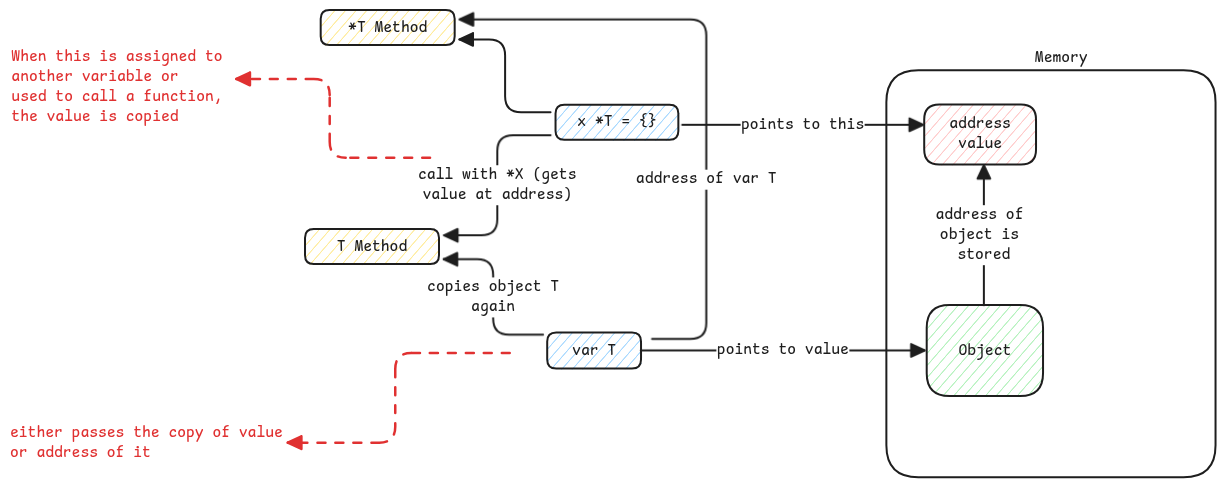Pointers and References
In Go, it's always pass by value. Even for structs, the object is copied into a new object when passed to the method.
In case of Java, the objects aren't not really pass by value. The value of the reference to the object is passed.
This is why objects are mutable in Java by default.
Pointers
Since it's pass by value by default, it's sometimes necessary to pass by reference. For example, if we want to allow the called function to update the passed value, or if passing a huge object by value isn't performant enough since the object is copied and sent to the calling function.
Asterisk Symbol
This one symbol is used for multiple things. This is a bit confusing.
-
Declaring pointer types. This is used to declare a variable that refers to address of the given type. Same is also used to declare function arguments that are pointers. and also for declaring pointer fields in structs.
var p *int -
De-referencing pointers. It's used to access the value available at the pointer.
x := 5
p := &x
fmt.Println(*p) // Prints 5
To de-reference a pointer variable, we use * symbol. But what's tricky is, * is used to declare pointer variable and also to access the value at the address.
In variable declaring, * is on the type T. In de-referencing, * is on the variable name.
Ampersand Symbol
This is used to get the address-of the variable.
& symbol is used only for getting the address of the variable or struct.
For everything else, we use asterisk symbol.
Implicit De-referencing
In case of structs, there is no need of explicit use of * symbol always.
Even if we've a variable that has the adress-of a struct, the variable can be used directly to access the struct fields and the receiver methods.
type Person struct {
Name string
}
func (p *Person) SayHello() {
fmt.Println("Hello, " + p.Name) // No explicit * needed
}
func main() {
p := &Person{Name: "Alice"}
p.SayHello() // Implicitly dereferenced
}
